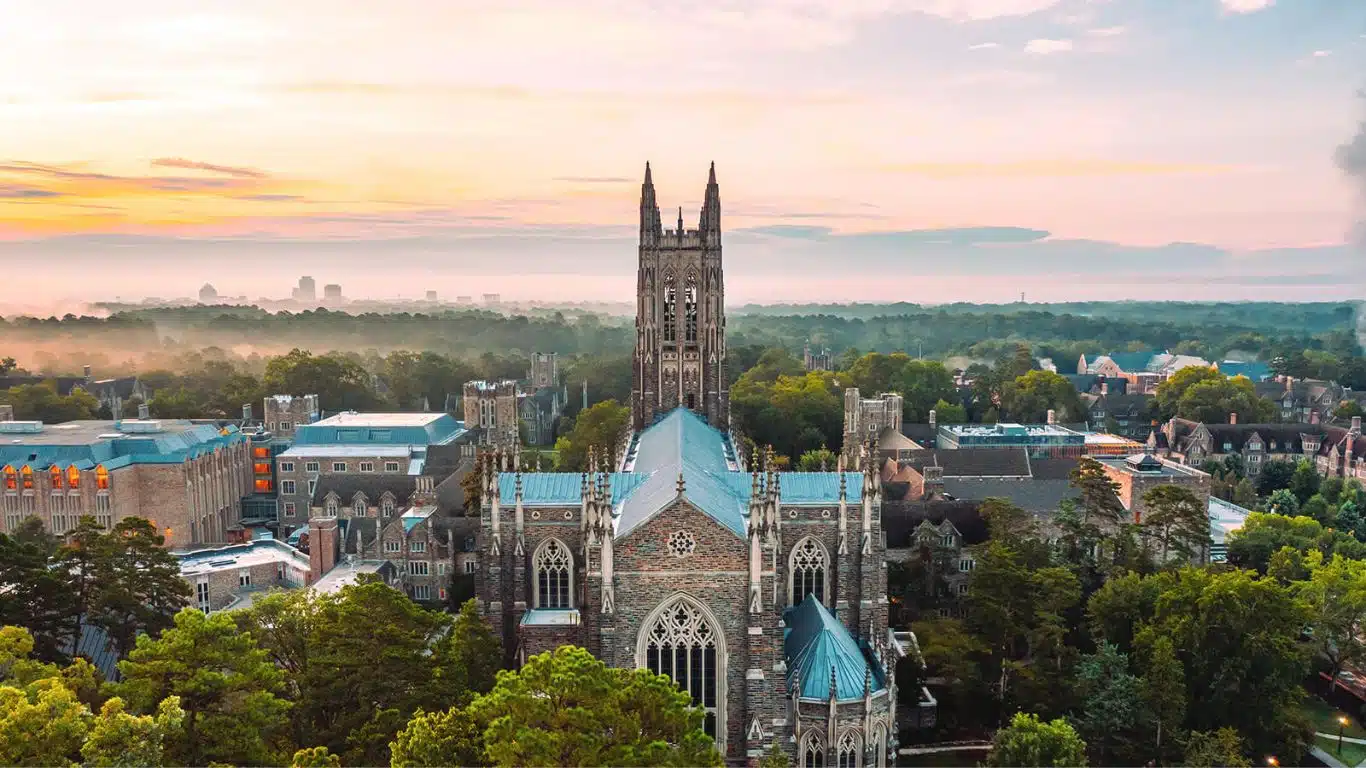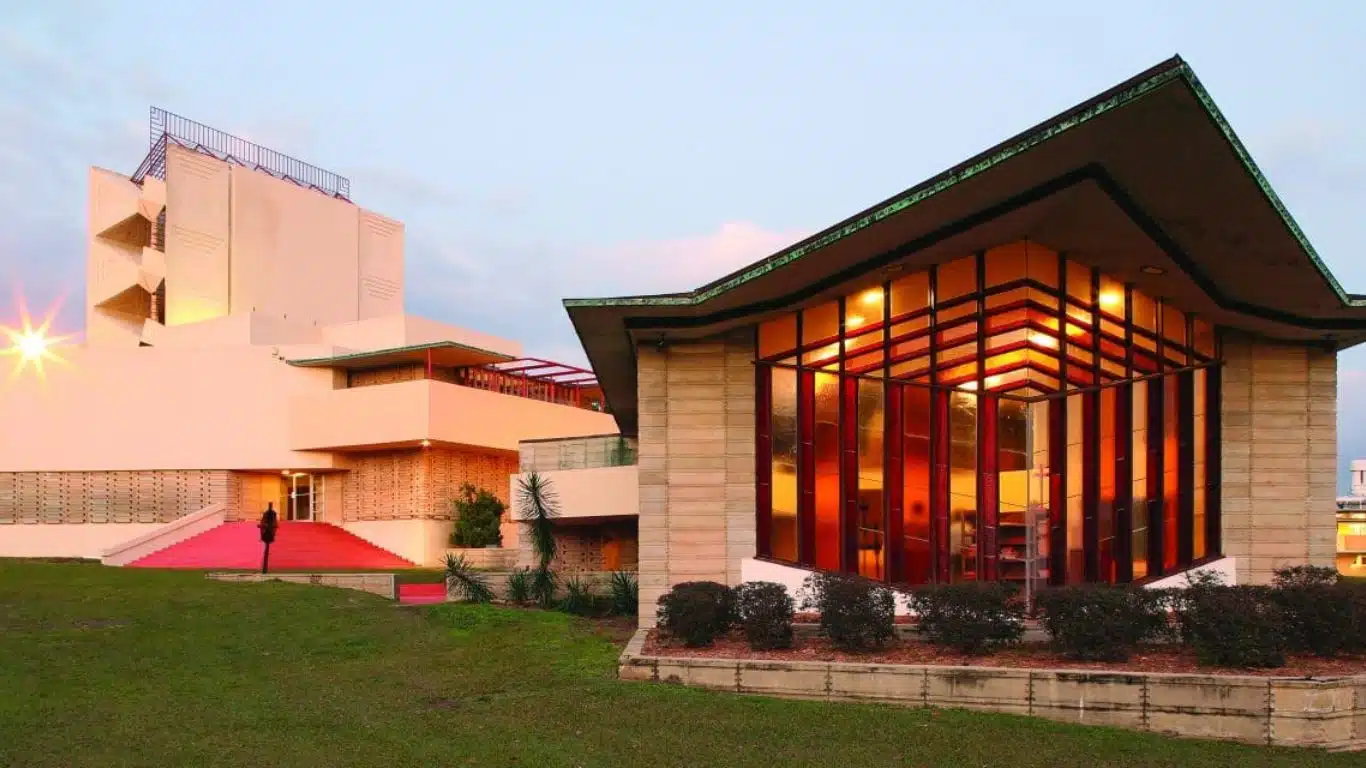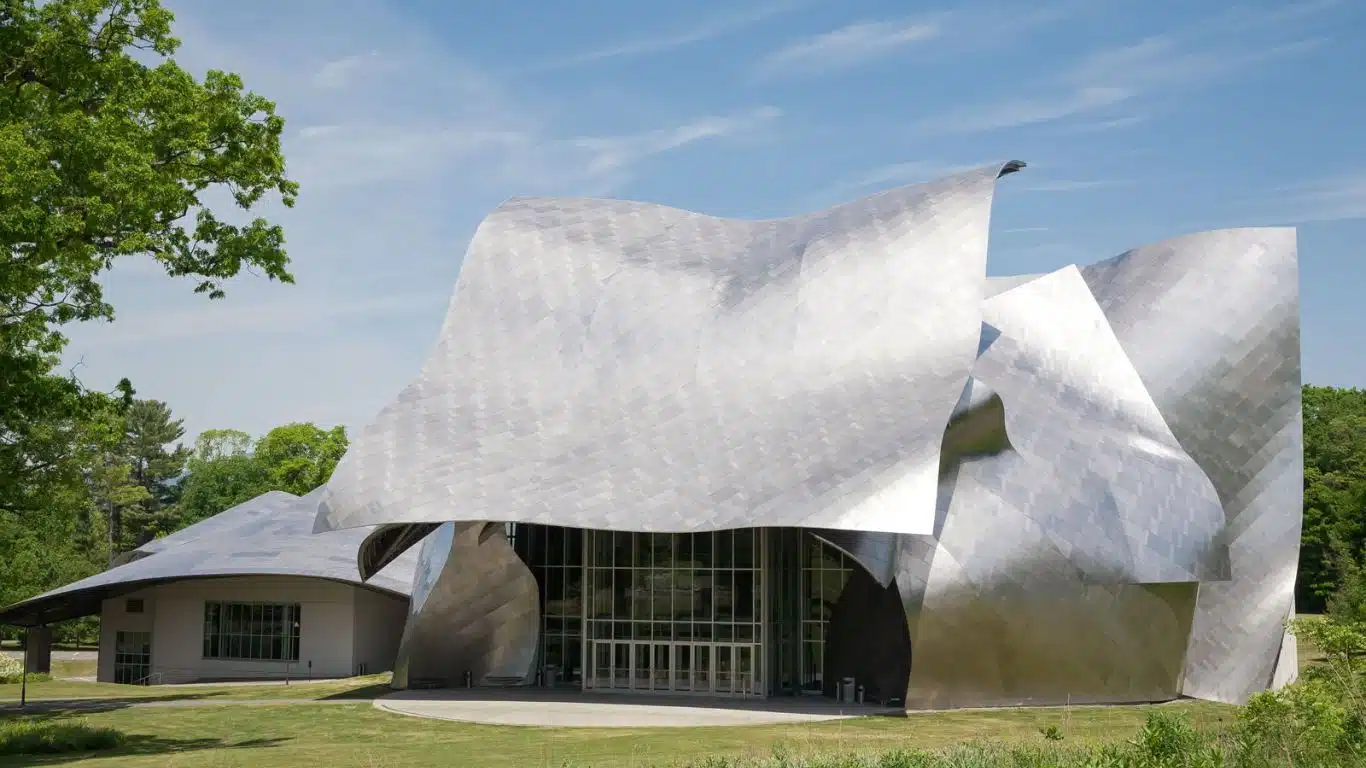Architecture plays a vital role in the overall learning experience of students. The design of a school or university campus can inspire creativity, promote collaboration, and enhance the educational journey. In this article, we will explore 15 Educational Institutions With Exceptional Architecture around the world. From innovative and modern designs to historic and traditional structures, these institutions showcase the power of architecture in creating inspiring learning environments. Join us as we take a closer look at the breathtaking buildings and campuses that provide a home to some of the world’s brightest minds.
15 Educational Institutions With Exceptional Architecture
Massachusetts Institute of Technology (MIT)

Alvar Aalto’s Baker House and Eero Saarinen’s chapel, constructed in 1949 and 1955 respectively, exhibit a seamless integration with the overall aesthetic of MIT’s campus through their red brick exteriors. However, the undulating designs of these buildings are far from conservative. MIT has continued to experiment with bold architectural designs, although the outcomes have been mixed. While Frank Gehry’s Stata Center has garnered more attention for its leaks than its striking form, Steven Holl’s Simmons Hall matches the audacity and scale of Aalto’s creation.
Illinois Institute of Technology (IIT)

IIT’s architecture has a corporate aesthetic and attracts admirers of Mies van der Rohe, the renowned architect who once led the school’s architecture program. Mies van der Rohe’s influence is evident in the steel-and-glass campus, as well as the design of Crown Hall, which reflects his mastery of International modernism. The 2003 Campus Center, designed by Rem Koolhaas, pays homage to Mies with a glass portrait towering 20 feet at the entrance. The steel tube of the Campus Center, spanning 530 feet and enclosing an elevated railway, adds a modern touch to the campus while still honoring its architectural legacy.
Rajkumari Ratnavati Girls School, Jaisalmer

The Rajkumari Ratnavati Girls School, located in the Thar desert of Jaisalmer, is part of a larger complex that consists of three buildings. The school, known as the Gyaan Center, was designed by Diana Kellogg and incorporates feminine sensibilities into its unique architectural design. The building utilizes locally-sourced hand-carved Jaisalmer sandstone, which not only gives the school a beautiful aesthetic but also helps to reduce carbon emissions. Other energy-efficient features include a solar panel canopy on the roof for cooling, an elliptical shape that promotes airflow, high ceilings, and the use of jalis to keep the heat at bay. The complex also includes The Medha, a performance and art exhibition space, and The Women’s Cooperative, which will teach local weaving and embroidery techniques.
Duke University

The Duke University campus, spanning over 8,600 acres, is celebrated for its impressive collegiate Gothic architecture that showcases masterpieces like the Duke Chapel and Perkins Library. The credit for its stunning design goes to Horace Trumbauer and chief designer Julian F. Abele from Philadelphia. The campus boasts of Georgian-style dormitories, and the use of stone and carved-limestone adds to its grandeur. The campus has continued to inspire not only students but also design enthusiasts who admire its breathtaking architecture.
Pratt Institute

In 2005, a fire destroyed the Higgins Hall at Pratt’s campus, leading to the creation of Steven Holl’s translucent addition that connected the campus’ historic landmark buildings. Holl’s design is a testament to the idea of reading time through layers. Pratt’s enclosed campus also boasts other modern structures such as the Skidmore, Owings & Merrill designed Leo J. Pantas Hall dormitory from the 1980s. However, it is the numerous buildings constructed between 1885 and World War II that have earned Pratt a spot on the National Register of Historic Places, making it a standout institution with a rich architectural history.
University of Virginia

With Thomas Jefferson as its chief architect and a World Heritage site designation, the campus of the University of Virginia doesn’t need to prove its architectural prowess. In fact, the school reverted the changes made to its iconic rotunda by Beaux Arts architect Stanford White in 1976 and restored it to Jefferson’s original Neoclassical design. Despite its historic significance, the campus remains a dynamic and lively environment. Its breathtaking Lawn, which was ahead of its time in design, continues to serve as a bustling and inclusive gathering place for students and visitors alike.
Mayo College, Ajmer, Rajasthan

Mayo College, located in Ajmer, is a sprawling boarding campus that spans over 187 acres and was founded in 1875 by former Viceroy of India, Richard Bourke. The Indo-Saracenic style of architecture used in the college, which blends Hindu and Mughal elements with local Rajput architecture, is a remarkable example of this style. The college’s assembly hall resembles a church and has portraits of royal patrons. The Danmal Mathur Museum, housed in Jhalawar House, features lofty shikaras, graceful domes, and roof pavilions, and is one of the world’s largest school museums, with 18 rooms dedicated to antiques and an armoury section.
Brown University

Despite its reputation for academic excellence, Brown University has not always had architecture that matches its standards. However, this changed in February when the Granoff Center for the Creative Arts, designed by Diller Scofidio + Renfro, was completed. The building’s transparent design both inside and out represents a significant improvement, bringing the campus up to par with the progressive education it offers. Located in Rhode Island’s capital, the Granoff Center for the Creative Arts finally provides Brown University with a building that complements its old-world campus.
Yale University

Yale University has been witness to over 300 years of architectural history, with renowned architects such as Philip Johnson, Louis Kahn, and Eero Saarinen adding their innovative designs to the campus in the post-World War II construction boom. Even today, the tradition of nontraditional architecture continues with contributions from Kieran Timberlake, Sir Michael Hopkins, and Cesar Pelli, and a new project from Norman Foster on the way. According to Robert A.M. Stern, the dean of the university’s School of Architecture, Yale’s campus is an excellent place to observe the evolution of architectural styles, blending Georgian and Gothic Revival structures with modern designs.
Harvard University

Despite its buildings dating back to the 1720s, Harvard University, the oldest institution of higher learning in the United States, has been at the forefront of modernist architecture. The Carpenter Center, featuring a radical pedestrian ramp, is Le Corbusier’s sole creation in America (aside from his collaboration on the United Nations headquarters). However, it was the work of Corbusier’s disciple, Josep Lluís Sert, which truly established Harvard’s modernist heritage, including designs for the Holyoke Center and the Harvard Science Center, both of which continue to spark controversy even today.
La Martinière, Lucknow

La Martinière, located in the city of Lucknow, was originally a county home of Major General Claude Martin built in the late 1700s. It was converted into a school in 1845 and has since been meticulously restored. The architecture of the school pays homage to its past and is a popular tourist attraction, particularly the main building, Constantia. The campus features stone lions on the turrets, gargoyles, Greek statues on the ramparts, and Italian-styled ornamentation within the rooms that reflect French architecture. As the building was once a residence, it contains numerous art and antiquities, including paintings, stained glass windows in the chapel, and statues.
Bennington College

On a sprawling 550-acre campus situated at the base of the Green Mountains, forward-thinking students and educators engage with each other within a collection of remarkable buildings. Designed by renowned architects such as Pietro Belluschi, Carl Koch, Kyu Sung Woo, Edward Larrabee Barnes, and Robertson Ward, the campus buildings exude creativity and innovation. The student residences, which are featured here, boast stunning architectural designs. The newest addition to the campus is the Center for the Advancement of Public Action, consisting of three buildings nestled into a sloping site that were constructed using locally sourced materials. This design marvel was brought to life by Tod Williams Billie Tsien Architects.
Florida Southern College

Nestled on the shores of Lake Hollingsworth lies a hidden gem – the largest collection of Frank Lloyd Wright buildings on a single site. This campus boasts twelve of Wright’s masterful structures, interconnected by low esplanade roofs that offer respite from the scorching sun. However, what many are unaware of is that students played a significant part in constructing the campus throughout the 1940s and ’50s, trading their carpentry and masonry expertise for tuition waivers. Both male and female students contributed to the construction, making it a truly collaborative effort that adds to the unique charm and character of this remarkable institution.
Bard College

The Richard B. Fisher Center for the Performing Arts, designed by Frank Gehry and inaugurated in 2003, stands out as a remarkable example of avant-garde architecture on the college campus. Its stainless-steel exterior, featuring striking undulations, captivates visitors and adds to the building’s grandeur. Additionally, the campus hosts other notable structures like the Ward Manor residence hall, which exudes a Tudor Revival style. Overall, these buildings showcase a blend of contemporary and traditional architectural styles, creating a unique and captivating environment for students and visitors alike.
Institute of Management (IIM), Bangalore

IIM Bangalore, designed by the renowned B.V. Doshi in 1983, pays homage to the city’s nickname, the ‘Garden City’. Its 100-acre campus is modeled after Fatehpur Sikri, with interconnected corridors, courtyards, and outdoor spaces. The campus was designed to facilitate open communication between students and teachers through its storied hallways, spatial forms, and open quadrangles. The asymmetrical design, intentionally constructed to allow for natural light and airflow, promotes a charming learning environment. The semi-open and closed design incorporates hand-chipped granite, concrete, and Kota stone flooring. Recently, Mindspace architects added a block while maintaining the original built structure. The surrounding landscape is a key element of the overall design.
Also Read: 10 Most Haunted Places in The World That You Must Visit





